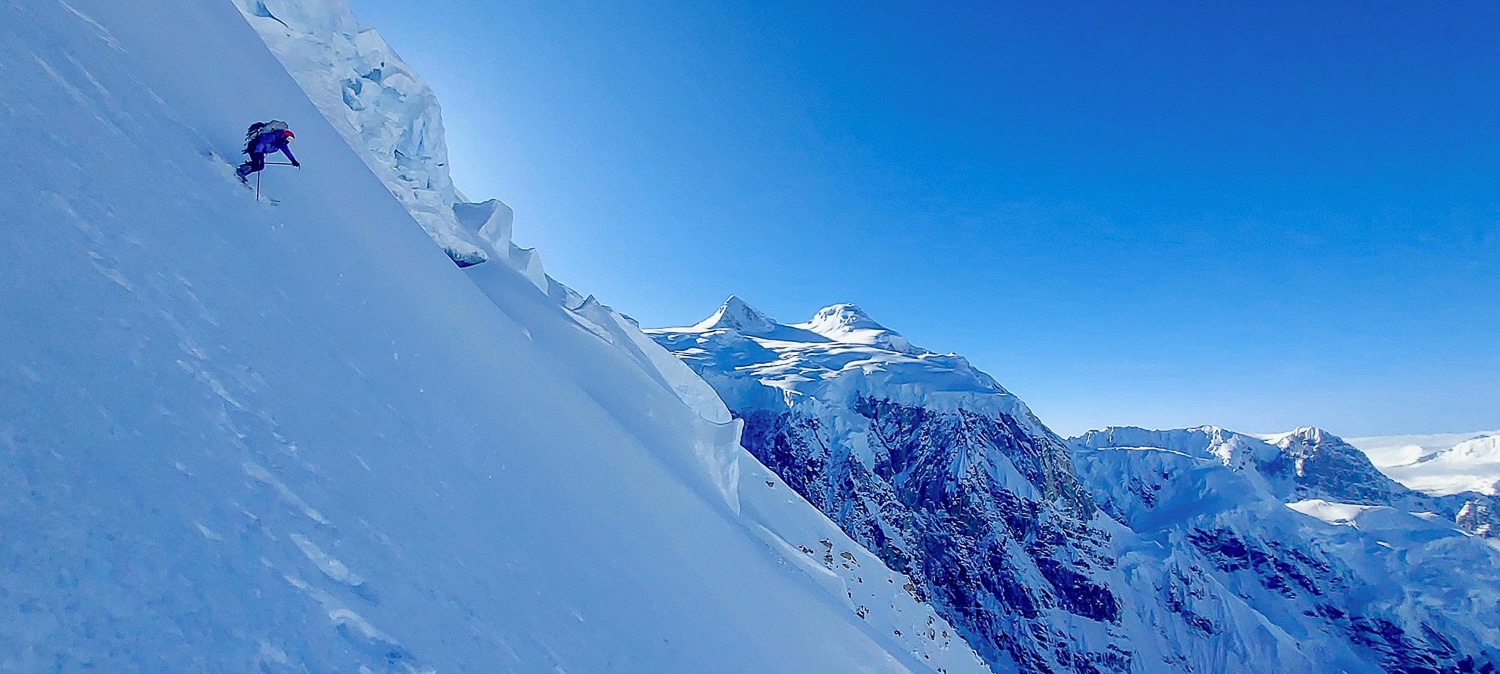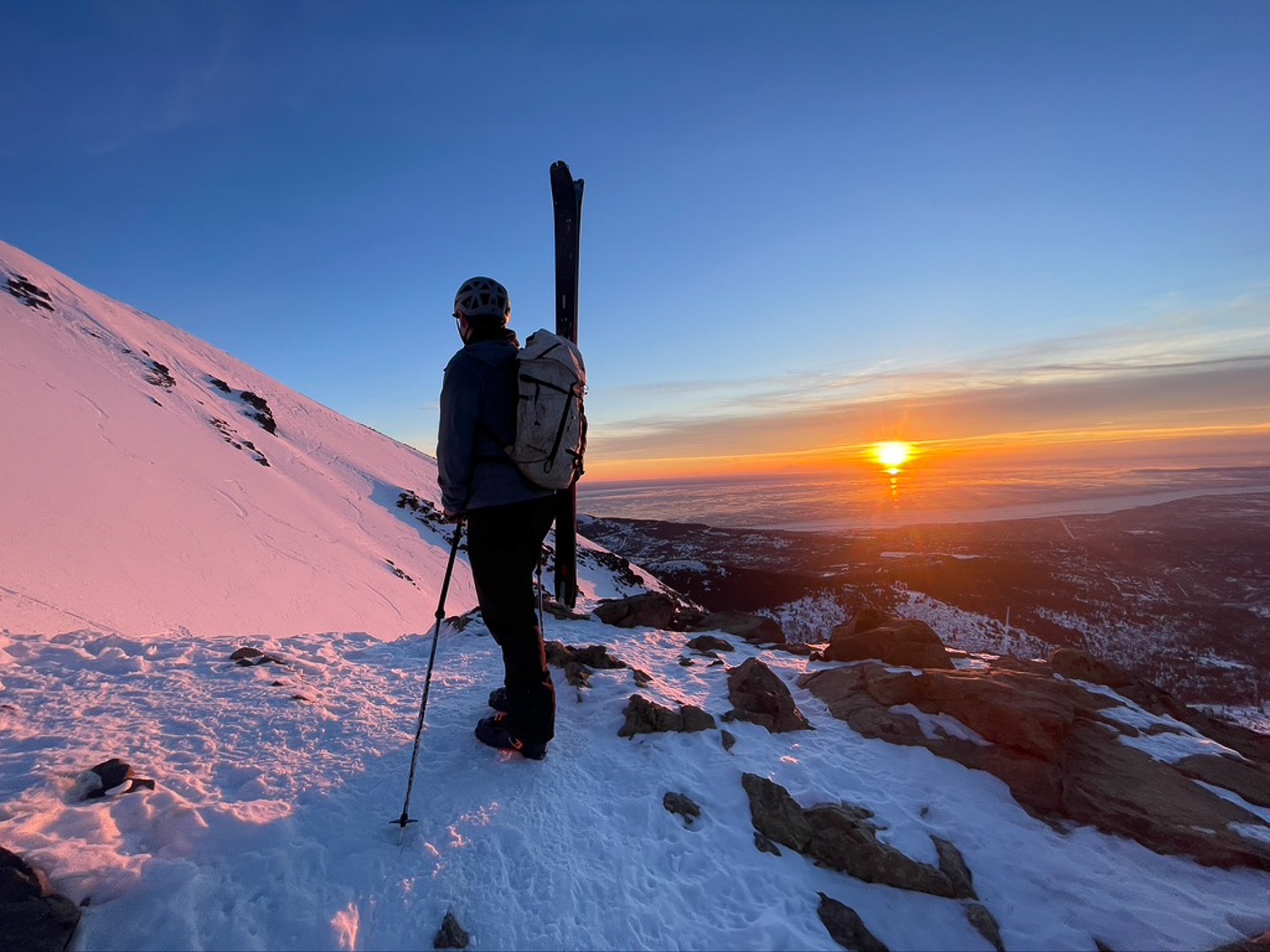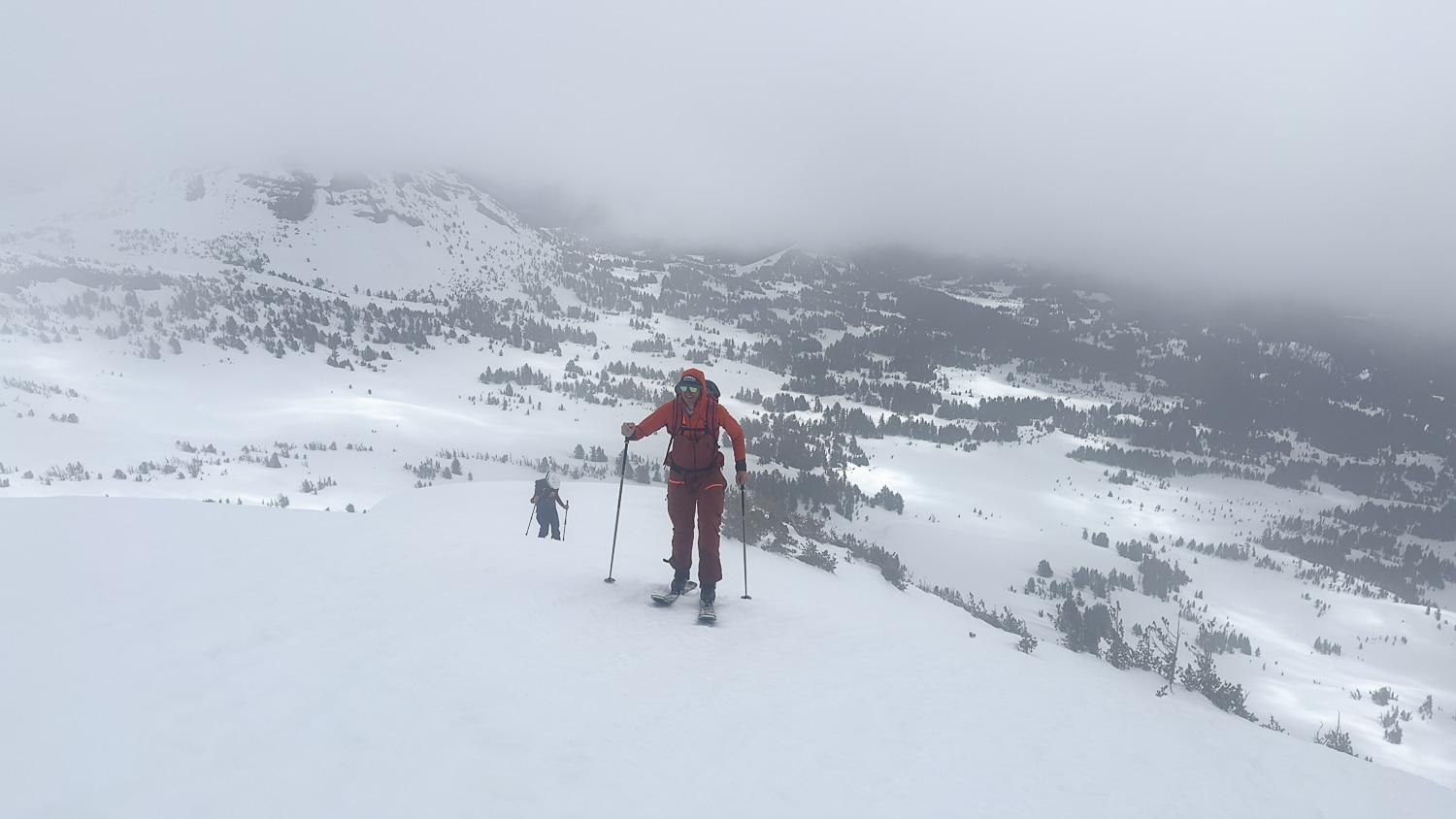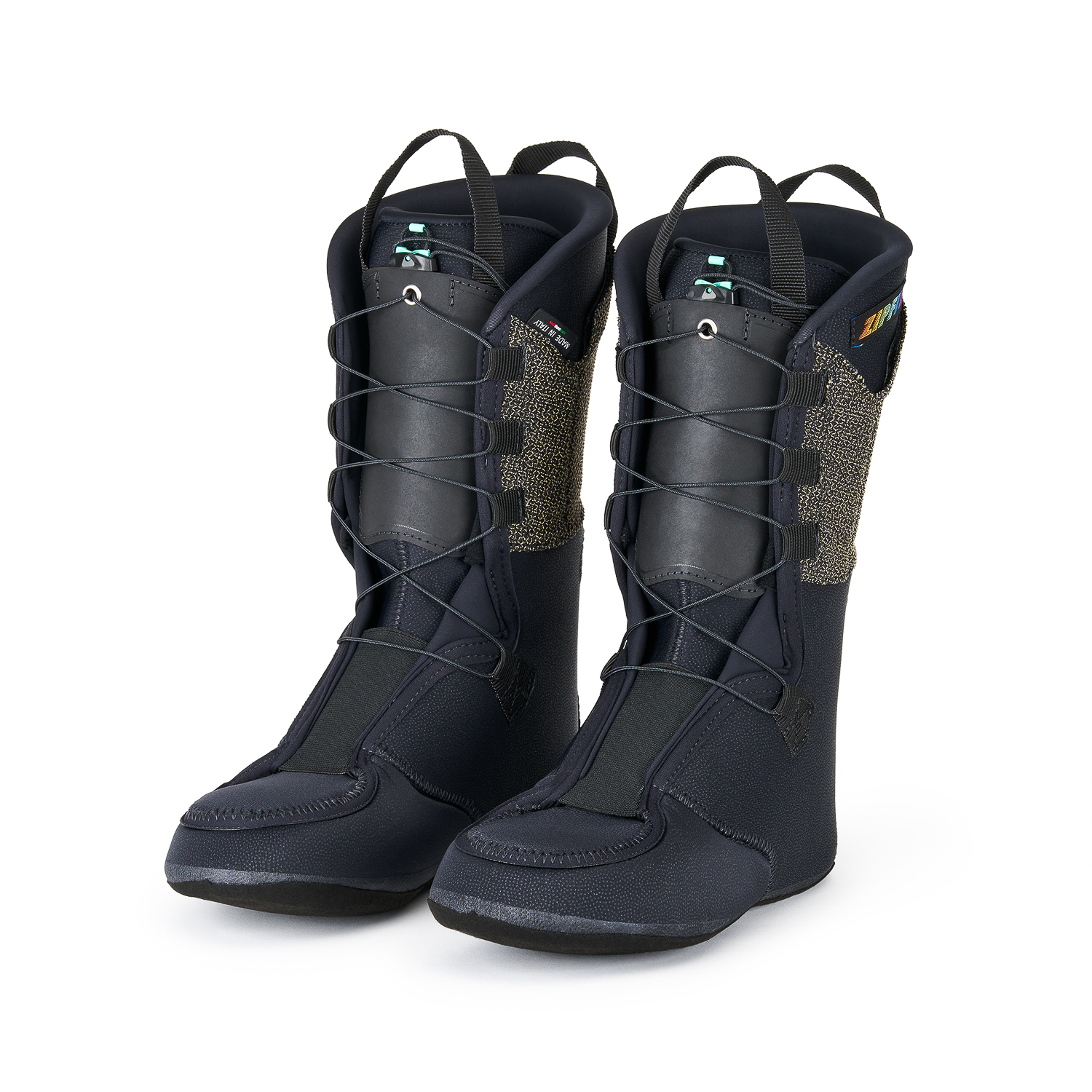If you’ve spent any time walking uphill on skis in the Tahoe Basin, you’ve likely experienced the following: backsliding on a freshly set skin track, a desperate pole plant at a blown-out kick turn, the creeping realization that ski crampons might be your only hope of topping out. It’s a familiar struggle, and the culprit is always the same. Tahoe, your skin tracks are too steep.
Pointing out the obvious—the excessive pitch of our winter trails—will surely provoke a familiar response from seasoned touring enthusiasts: “If the skin track is too steep, set your own.” To be clear, that is the correct answer. But while I do reset tracks from time to time, there are plenty of situations where cutting a second track isn’t just a hassle—it’s counterproductive for the entire ski community.
Two parallel tracks—one reasonable, one too steep—will inevitably cross each other and reduce the usability of both tracks where they intersect. If the tracks are too far apart, the tracks consume more untouched snow, reducing available snow for everyone.
New and novice backcountry skiers—of which there are plenty in Tahoe—often cannot set better tracks due to a lack of fitness, skill, and navigational awareness. And let’s be honest, even the capable don’t always have the time or energy to re-cut a proper skin track when the best descents have already been claimed by those who got there first.
Finally, there’s an unspoken social contract between the track-setter and those who follow. Setters bear the effort of breaking trail through deep snow, for which they are rewarded with fresh turns and the privilege of curating the experience for everyone behind them. The first one up gets to dictate the experience for the rest. Simply setting a new track when one already exists sidesteps their vision and upsets the dynamic.
While poorly set skin tracks surely exist worldwide, I’ve long suspected that the Tahoe Basin is a particularly egregious offender. I confirmed that suspicion after a trip to Chamonix, France, where the skin tracks were perfectly graded—not too steep, not too shallow, just right. Upon my return home to a snow-starved Tahoe, I set out with a partner for a midweek lap up a popular spot after a recent storm. Despite being only hours old, the skin track was horrendous—too steep and inconsistent, meandering over rocks and trees unnecessarily while ignoring natural benches that would have facilitated smooth turns. Despite being only hours old, the track was already an unpleasant, inefficient mess, even for experienced skiers.
This brings me to the inevitable second response from those seasoned backcountry skiers: “If it’s too steep, you’re too weak.” To this, I say they are demonstrably wrong. I make no claim to being the strongest skier in the basin, but I’ve skied with enough partners and in enough different regions to know that it’s not my fitness or technique that makes me struggle with these poorly established tracks. Take a trip to the Wasatch, the Pacific Northwest, Colorado, or British Columbia, and you’ll see that there’s simply a better way. While overly steep tracks certainly exist elsewhere, they seem far less common than in Tahoe.






Leave a Reply
You must be logged in to post a comment.